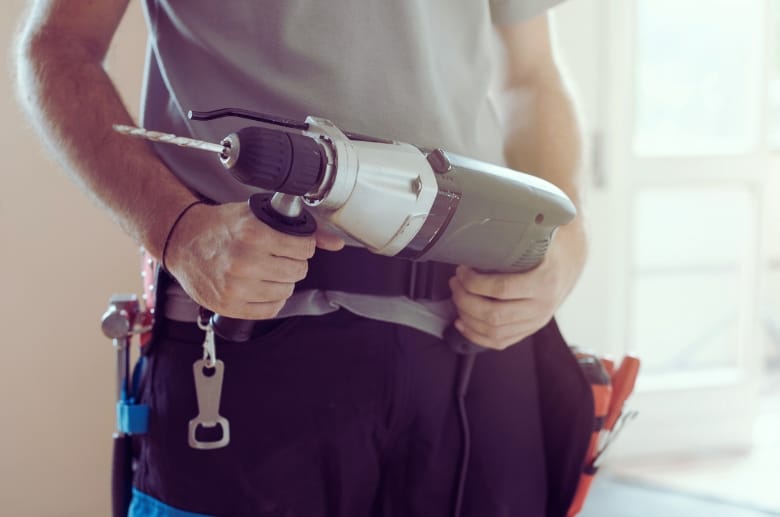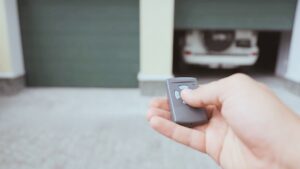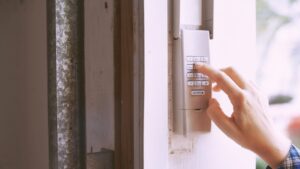Getting locked out of garage door from the outside can be a frustrating and inconvenient experience. This problem can leave you stranded outside your garage and be troublesome, especially if you need to get inside to retrieve something important.
For such reasons, it’s crucial to know how to regain access and prevent future lockouts while maintaining safety with your garage. This will help you avoid unnecessary stress and save time and money by not having to call a professional locksmith whenever you get locked out of your garage.
Our guide will discuss seven easy ways to unlock your garage door and get back inside, so you won’t have to worry about being locked out again.
How to Open Locked Garage Door From Outside in 7 Easy Ways
Getting locked out of your garage can be challenging. However, with a few garage hacks in hand, it doesn’t have to be a nightmare. Below are seven simple steps to help you quickly and easily open if you’re locked out of garage door from the outside.
1. Assess the Situation
Before you try to open the door, take a step back, and analyze the situation critically. You can ask yourself the following questions:
- Why is the door locked, and what could be causing the problem?
- Is the lock mechanism broken or jammed?
- Is the door off its tracks?
- Are the batteries in your remote dead?
By asking yourself these questions, you can better understand the best solution to
unlock the door safely and efficiently. Furthermore, you’ll be able to avoid panicking or causing damage to the garage door, which is the most common mistake homeowners make when locked out of their garage.
Connect With A Garage Expert
Connect with local experts, Compare quotes, Get the best price.
2. Check for Alternative Entry Points

After fully assessing the situation and understanding the root cause behind the locked door, you should look for an alternative entry point. For instance, you can check for an unlocked side/sliding glass door or windows that may provide access to the garage.
This will help you avoid issues like forced entry (brute force, kicking, or using a tool) to break the locked garage. You’ll also prevent significant damage to the door, the locking mechanism, or the surrounding walls and framing.
3. Unlock the Garage Door Manual Release Lock

If you check and miss an alternative entry point, this step is for you. Below is a guide to help you get it done.
- First, you’ll need to locate the manual release cord, usually on the inside of the door, at the center top.
- Unlock the manual release that gives you access release cable. Some garage doors have a locking mechanism on the manual release. If this is the case, you’ll need to use your manual release key to unlock before proceeding.
- Pull the manual release cable down once the manual release mechanism is unlocked. This will disengage the door from the automatic opener and allow you to lift the door manually.
- Unlock the manual lock: If your garage door has a manual lock, use your garage key to unlock it before attempting to lift the door.
- Lift the door: With the manual release mechanism pulled and the manual lock unlocked, lift the garage door manually. Ensure you lift it slowly and steadily to prevent injuries.
4. Look for Manual Overrides
A manual override will help you get your locked garage door open. The procedure is pretty straightforward:
- Press the garage door at the center top, and look for a hinged release lever about 4-6 inches below the ceiling.
- Locate the rope or cord attached to the release lever, and use a long, thin, and bendable tool to reach it. An unfurled coat hanger is a good option.
- Using your tool, hook the rope or cord attached to the release lever, and pull down toward yourself. This will disengage the trolley from the opener carriage and allow you to open the door manually.
5. Drill Through the Garage Door Lock

It’s essential to note that drilling through the garage door lock should be a last resort and only attempted if you’ve exhausted all other options. Drilling the lock will damage it, and you’ll likely need to replace it afterward. If you’re attempting to drill through the lock, follow these steps:
- Choose the right drill bit: Use a drill bit that’s the same size or slightly smaller than the lock’s cylinder.
- Mark the drilling spot: Use a pencil to mark the center of the lock’s cylinder. This will help you keep the drill bit in the correct position.
- Drill through the lock cylinder: Place the drill bit on the mark you made, apply steady pressure, and drill straight through the center of the cylinder.
- Remove the lock cylinder: Once the cylinder is drilled through, use pliers to remove it from the lock.
- Unlock the garage door: After removing the lock cylinder, simply turn the lock mechanism and open the door manually.
6. Check to See if the Garage Door Opener is Wifi Enabled
There are various types of garage door openers in the market today. However, the most common one is the modern garage door openers, which are equipped with advanced features, such as Wi-Fi connectivity, that enable you to operate your garage door remotely from your smartphone.
Refer to the user manual or contact the manufacturer to check if your garage door opener is Wi-Fi enabled. The manual will typically provide information on the features of the garage door opener, including whether or not it has wifi connectivity.
If you do not have the manual, you can search for the model number of your garage door opener online and find the specifications on the manufacturer’s website.
Connect With A Garage Expert
Connect with local experts, Compare quotes, Get the best price.
7. Call a Professional Garage Door Technician
Calling a professional garage door technician is the best action if all else fails. Attempting to force open the door or using other DIY methods can cause more harm than good and may lead to injuries.
A trained technician will quickly identify the issue and provide a solution that ensures the door is operational again. They can also inspect the door to prevent future lockouts and recommend any necessary repairs or upgrades.
Selecting a reputable and licensed professional is crucial before calling a garage door technician. You can ask for referrals from friends or family, read online reviews, and check their credentials to ensure you get quality service.
Common Causes of Garage Door Lockouts
Various reasons can cause a garage door lockout. However, some of the most common reasons include the following:
1. Dead Batteries in Remote Control
If the batteries in the remote are dead, the remote won’t work, and you won’t be able to open the garage door. Ensure you regularly replace the batteries with new ones (according to the manufacturer’s recommendations) to avoid such an issue.
2. Garage Door Opener Malfunction
The malfunctioning garage door opener is another common cause of door lockouts. This can happen for various reasons, like worn-out parts, power surges, or electrical issues. In such cases, the garage door opener may not work, and the door won’t open or close.
We recommend a regular checkup of the garage door opener for visible signs of damage or wear and tear. This will help you deal with any arising safety issues before a lockout.
3. Manual Lock Damage
Like any other mechanical device, manual locks on garage doors can be damaged or worn out over time. Sometimes, the lock may become damaged due to attempted break-ins or vandalism.
If you suspect your manual lock is damaged, a professional garage door technician must have it repaired or replaced before you get locked out of the garage door.
4. The Key Broke Inside the Lock

Although not intentional in most cases, having a broken key inside your garage door lock can easily keep you locked out of your garage. This can happen due to excessive force or using the wrong key to open the garage door.
To address this issue, try removing the broken key using a pair of needle-nose pliers or a broken key extraction kit and use a spare to unlock. If impossible, it may be necessary to call a professional locksmith to extract the broken key and repair or replace the lock if needed.
5. Power Outage or Electrical Issues
A power outage or electrical issues like a blown fuse or a tripped circuit breaker might lock you out of your garage. However, we recommend calling a professional garage door technician to assess the situation and provide a safe solution for this type of case.
6. Keypad is Not Working
An improper functioning keypad can be a frustrating experience that can cause a garage door lockout. Some common causes of a non-working keypad might include dead batteries, faulty wiring, or a malfunctioning keypad.
To solve the issue, you can first try replacing the batteries in the keypad. If this doesn’t work, check the wiring to see if there are any loose or damaged connections.
If you are unfamiliar with wiring or feel uncomfortable handling electrical components, it’s best to call a professional to diagnose and fix the issue. They can also replace the keypad if necessary.
Can You Force a Garage Door Open From the Outside?
It’s possible to force a garage door open from the outside if it’s locked. However, it’s crucial to note that forcing a garage door open is not recommended as it can be dangerous and cause damage to the door and its components.
If you find yourself locked out of your garage, it’s best to try other methods to gain access, such as checking for manual overrides or calling a professional garage door technician.
Final Thoughts
Overall, understanding garage door lockouts is crucial to prevent unexpected lockouts. The most common reasons include dead batteries in the remote control, garage door opener malfunction, manual lock damage, or power outages.
It’s essential to take preventative measures to ensure your garage door operates smoothly and avoid potential lockouts. This includes regularly checking batteries, maintaining the garage door opener, and considering installing a backup power supply.
Remember, if you encounter any issues or need help with how to proceed, always call a professional garage door technician.




